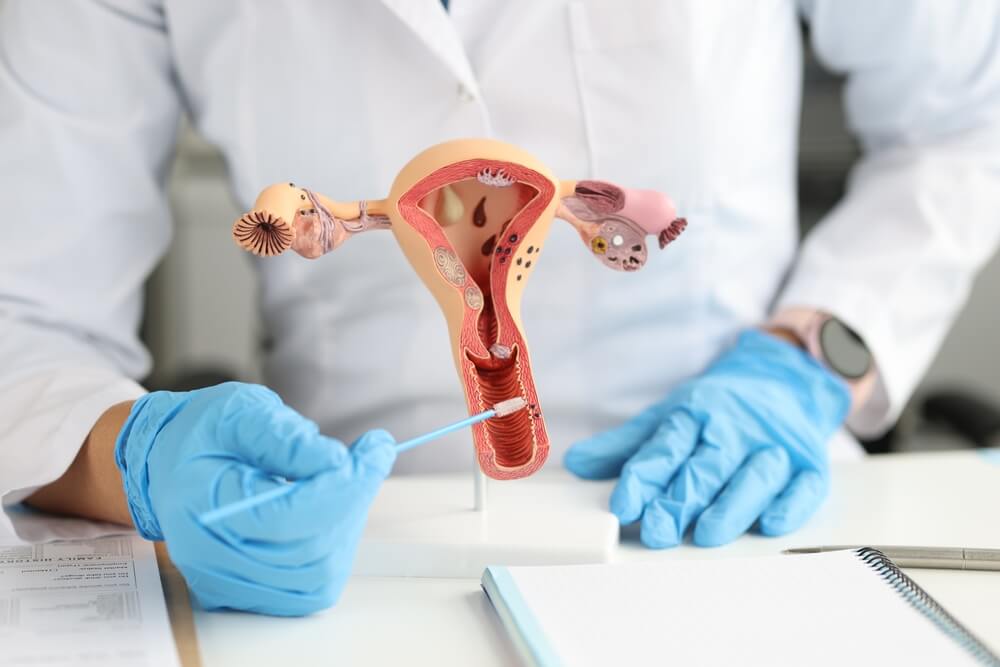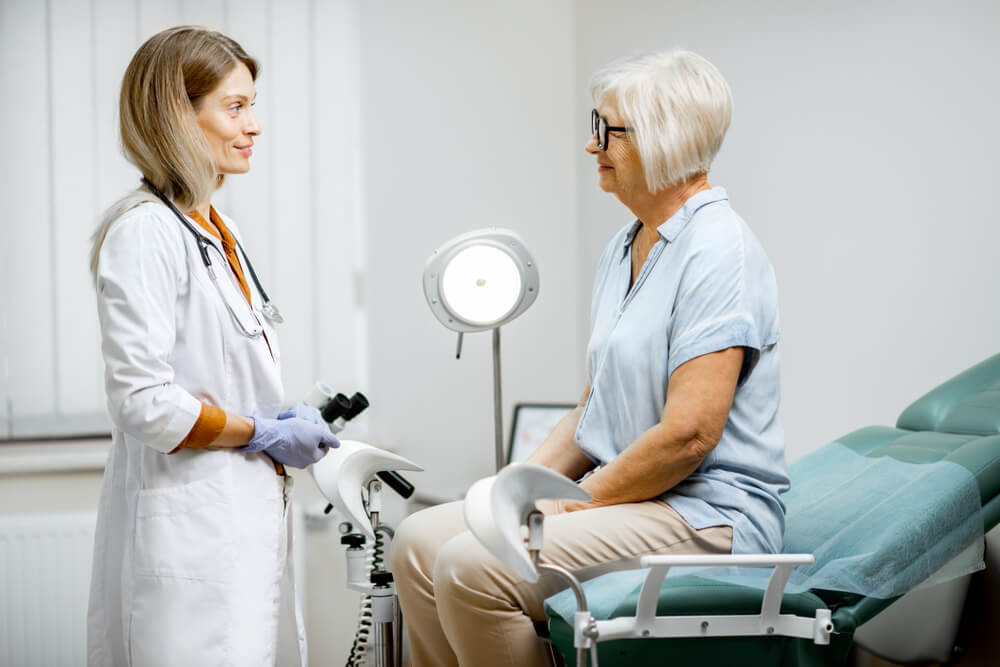Uterine polyp removal is a common procedure that is used to address small, noncancerous growths that develop in the uterus. These growths, also known as uterine polyps, can cause a range of uncomfortable symptoms, including heavy menstrual bleeding, irregular periods, and abdominal pain. While most polyps are harmless, they can greatly impact a woman’s quality of life. In this expert article, we will discuss uterine polyp removal in detail, including what it involves, who may benefit from the procedure, and what to expect during and after treatment. We hope to help women make informed decisions about their health and well-being by providing a comprehensive overview of polyp surgery in the uterus. Of course, also make sure to consult with professionals. We recommend opting for Gynecologic Surgery in Plantation, Florida.
Keep reading to find out more about what polyps in uterus removal entail.
Uterine Polyps Defined
Before explaining the surgery process for uterine polyps, let’s define what “uterine polyps” refer to.
Uterine polyps are growths that can develop in the inner lining of a woman’s uterus, also known as the endometrium. They are usually small and noncancerous (or benign) but can vary in size and number. Uterine polyps are more common in women in their 40s and 50s, although they can occur at any age. They are also more likely to occur in women who have gone through menopause, have had multiple pregnancies, or have a history of hormonal imbalances.
While many female patients with uterine polyps do not experience any symptoms, others may notice heavy menstrual bleeding, irregular periods, or pelvic pain. In some cases, uterine polyps may also interfere with a woman’s ability to conceive.
To diagnose uterine polyps, a healthcare professional may perform an ultrasound or hysteroscopy, which involves using a thin, flexible tube with a camera and light to examine the inside of the uterus. If the doctor finds uterine polyps, they can be removed through a minimally invasive procedure known as hysteroscopic uterine polyp removal.
During the uterine polyp removal procedure, a small instrument is inserted into the uterus through the vagina to remove the polyps. Most women are able to go home the same day as the procedure and can typically return to normal activities within a few days. However, uterine polyp removal recovery can vary depending on the individual, and some women may experience mild cramping or bleeding for a few days following the procedure.
Overall, uterine polyps are noncancerous growths that can cause discomfort and interfere with your life quality.
If you have any more questions or concerns related to uterine polyp removal or are seeking treatment for this condition, get the help of reliable and trained experts at a trusted clinic. If you are looking for the best, we suggest selecting Broward Complete OB-GYN Wellness Center.
Uterine Polyp Removal: Methods Explained

Several key methods exist for removing uterine polyps, including surgical and nonsurgical options. The choice of method will depend on the size and location of the polyps, as well as the patient’s overall health and medical history.
One of the most common methods of polyps in uterus removal is hysteroscopic polypectomy. This minimally invasive procedure involves using a thin, flexible tube with a camera and light to visualize the inside of the uterus and remove the polyps with small instruments. Hysteroscopic polypectomy is usually performed outpatient, and most female patients can return to normal activities within just a few days.
Next, there is a method of uterine polyp removal called dilation and curettage (D&C). This involves dilating the cervix and scraping the lining of the uterus to remove the polyps. While D&C can effectively remove uterine polyps, it is a more invasive procedure that requires general anesthesia and a longer recovery time.
Sometimes, experts may recommend a hysterectomy as surgery for uterine polyps. This surgical procedure involves the removal of the entire uterus and is usually reserved for patients with large or numerous polyps or other severe underlying medical conditions.
Moreover, nonsurgical options for uterine polyp removal include hormone therapy, which can help shrink the polyps or prevent them from growing. Also, there is uterine artery embolization, which involves injecting small particles into the patient’s blood vessels to block blood flow to the polyps.
As you can see, there are several methods for uterine polyp removal, including minimally invasive procedures like hysteroscopic polypectomy, more invasive procedures like D&C, and surgical options like hysterectomy. The choice of method depends on several factors, and patients should discuss their options with a trusted healthcare provider to determine the best course of treatment for their individual needs.
Polyps in Uterus Removal: How to Prepare
Are you scheduled to undergo polyps in uterus removal? If so, here are some things to remember when preparing for the procedure.
- Talk to your doctor: Before the procedure, make sure to discuss any concerns or questions you may have with your healthcare provider. This is also a good opportunity to review your medical history, medications, and allergies.
- Arrange for transportation: Depending on the type of procedure (like polyp surgery in the uterus), you may need to arrange for someone to drive you home after the procedure.
- Wear comfortable clothing: On the day of the procedure, wear comfortable clothing that is easy to change out of.
- Plan for recovery: While many patients can return to normal activities within a few days after the procedure, it is essential to plan for recovery time. You must refrain from sexual intercourse and strenuous physical activity until you are fully healed.
What to Expect on the Day of Uterine Polyp Removal

If you will have polyp surgery in the uterus, here are some things you must know on the day of the procedure.
- Preparing for the polyp surgery in the uterus: When you arrive at the hospital or the clinic, you will be asked to change into a hospital gown and sign consent forms. You may also be given medication to help you relax.
- Anesthesia: Depending on the type of procedure, you may be given general anesthesia, which will put you to sleep, or local anesthesia, which is supposed to numb the area around the uterus.
- The procedure: During the procedure, your healthcare provider will use a special instrument called a hysteroscope to visualize the inside of the uterus and remove the polyps. The procedure typically takes about 30 minutes to an hour, depending on the size and number of polyps.
- Post-procedure instructions: Before you leave the hospital or clinic, your healthcare provider will provide instructions for uterine polyp removal recovery, such as avoiding strenuous activities or sexual intercourse for a certain period.
Uterine Polyp Removal Recovery: Things to Consider
After the procedure, you will spend time in a recovery room, being monitored until you are awake and alert. You may experience cramping, bleeding, or discharge after the procedure, which is normal.
Here are some things to help you recover faster:
- Get enough rest: Rest for a few days after the procedure to allow your body to heal.
- Take pain medication: After the procedure, you may experience cramping, pain, or discomfort. Over-the-counter pain medication or prescription meds can help manage these symptoms.
- Use a heating pad: A heating pad or warm compress placed on the lower abdomen can help relieve cramping and pain.
- Eat a healthy and balanced diet: Focus on foods high in fiber, protein, and healthy fats.
- Stay hydrated: Drink plenty of water and other fluids to stay hydrated and encourage healing.
Give Us a Call Today
Consult with the experts and upgrade your health. Book an appointment with the best professionals in the field and get started today.


